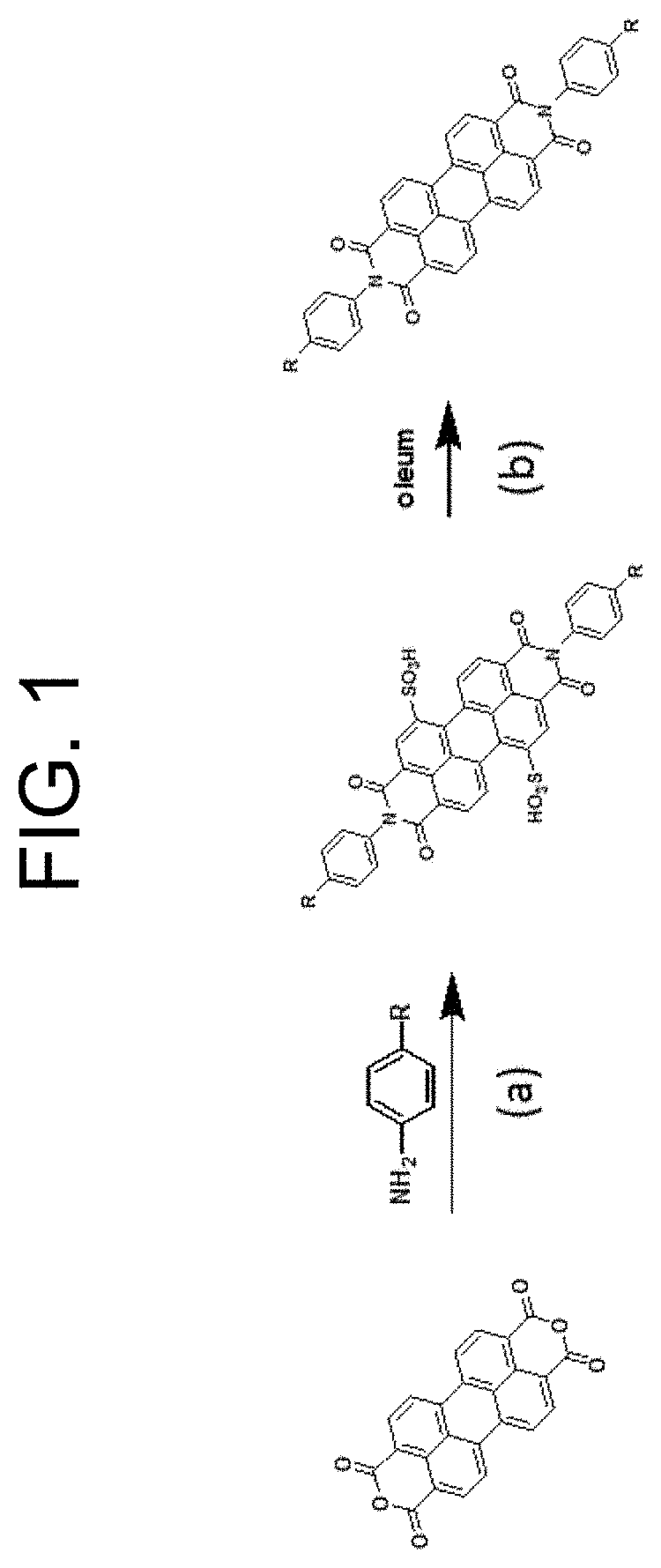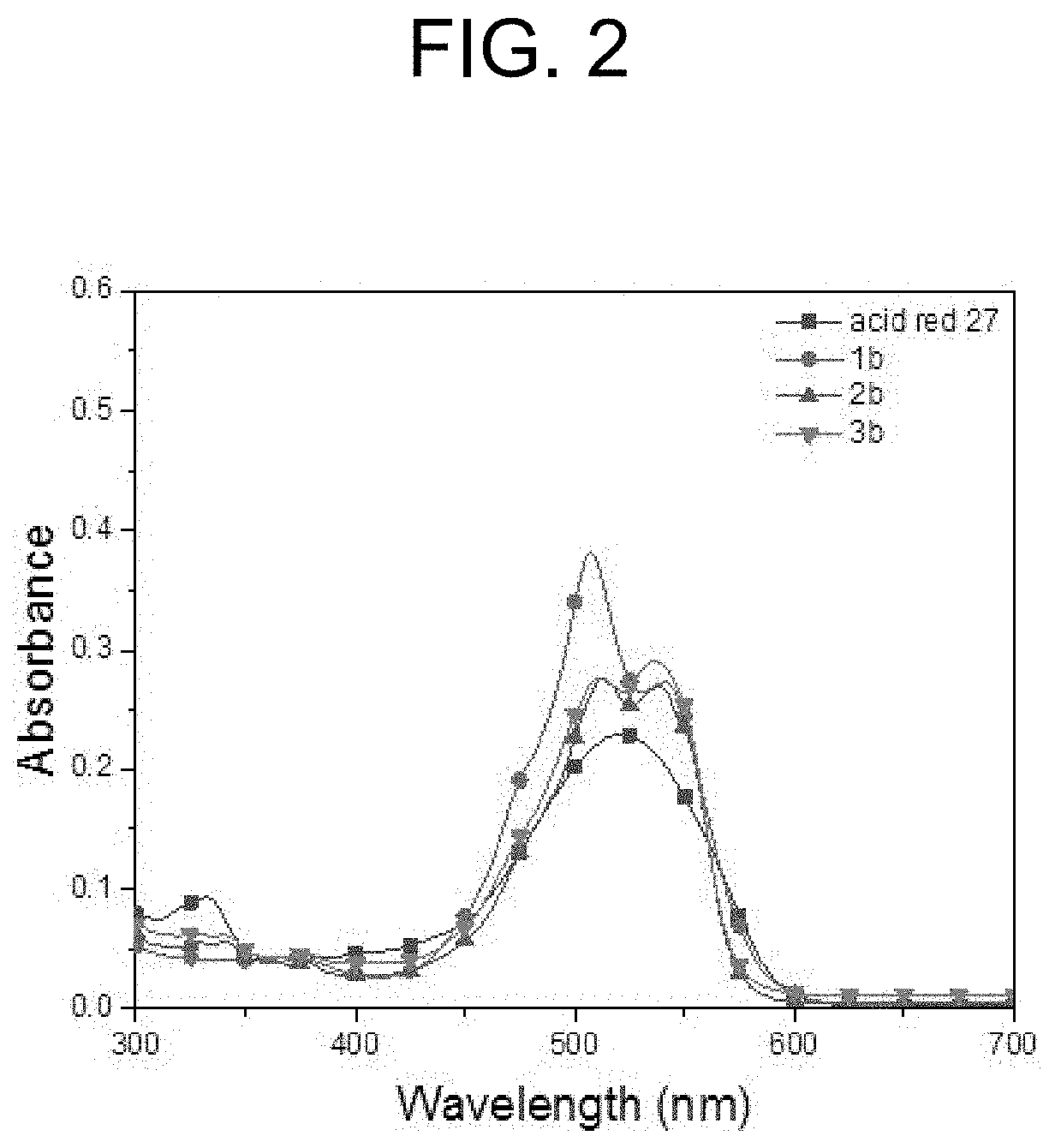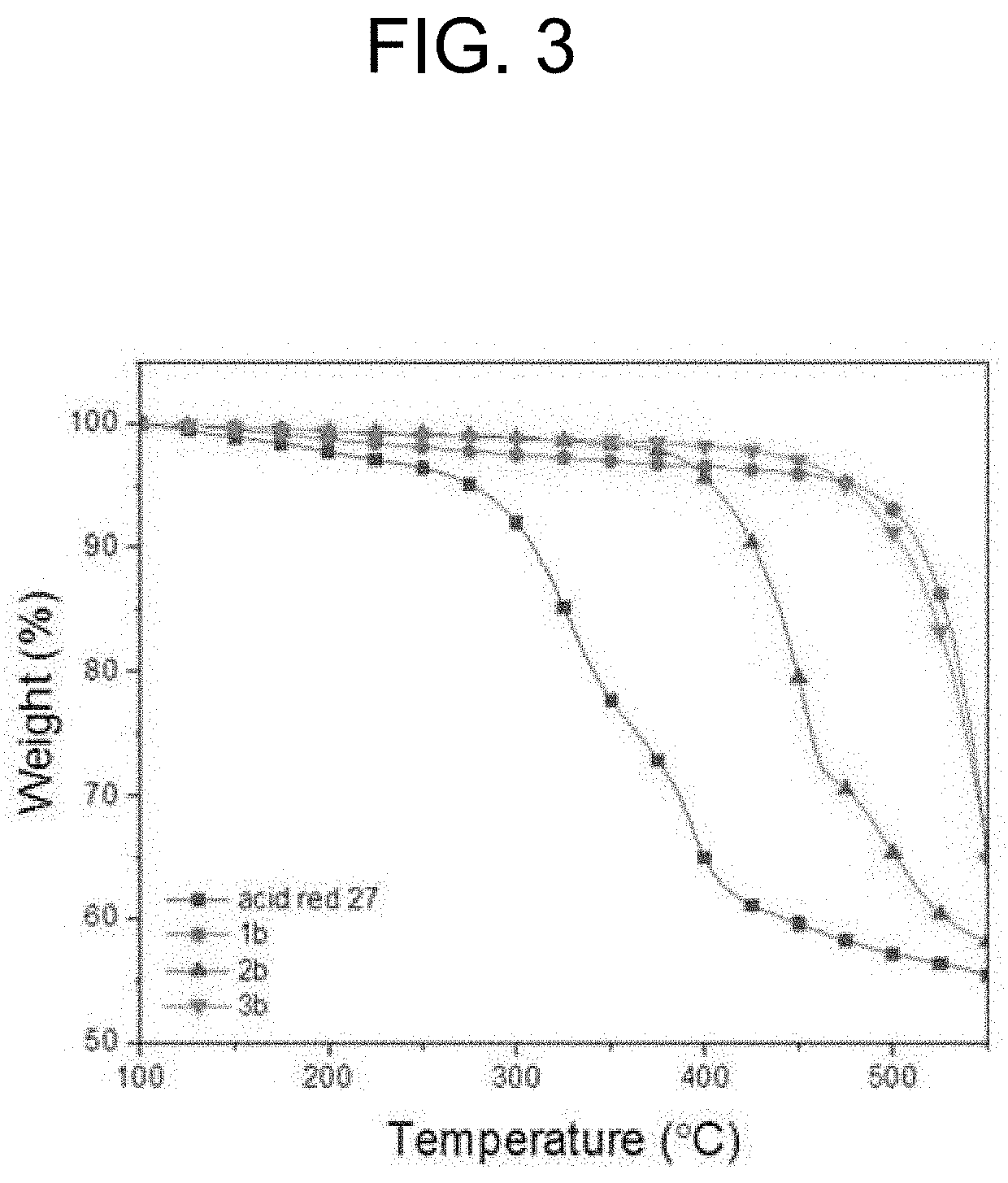High-saturation scarlet color dye ink for high-speed inkjet process
a dye inkjet process, high-saturation technology, applied in the direction of organic dyes, textiles and paper, naphthalimide/phthalimide dyes, etc., can solve the problems of low productivity, low dispersion/dissolution stability, and the limitations of dyes currently mainly used as dtp dyes in developing pale/deep colors and highly saturated colors
- Summary
- Abstract
- Description
- Claims
- Application Information
AI Technical Summary
Benefits of technology
Problems solved by technology
Method used
Image
Examples
example 1
on of N, N′-bis-(4-chlorophenyl)-3,4,9,10-perylenebis(dicarboximide)
[0136]A mixture of 20 g (0.051 mol) of perylene-3,4,9,10-tetracarboxylic dianhydride, 12.76 g (0.10 mol) of 4-chloroaniline, 400 ml of m-cresol, and 30 ml of isoquinoline was refluxed overnight at 50° C. The resulting mixture was heated to 130° C. in a nitrogen atmosphere, nitrogen gas was blocked when the temperature was raised to 130° C., a reaction was allowed to occur in the mixture at 130° C. for 5 hours, and then the temperature was raised to 150° C. and maintained for 4 hours. Subsequently, the reaction product was stirred overnight at 200° C. to thereby complete the reaction. The completely reacted solution was poured into 150 ml of acetone, and then the precipitate was filtered and dried in a vacuum at 100° C. for 2 hours. The dried unpurified product was washed with 5% NaOH until the characteristic green fluorescent color of the perylene-3,4,9,10-tetracarboxylic dianhydride disappeared, and the unreacted 4...
example 2
on of N,N′-bis(4-chlorophenyl)-1,7-(disulfuric acid)perylene-3,4,9,10-tetra carboxydiimide (1b)
[0137]25.68 g (0.042 mol) of N,N′-bis-(4-chlorophenyl)-3,4,9,10-perylenebis(dicarboximide) was added into 160 ml of oleum (20% SO3) and refluxed overnight at 145° C. The refluxed solution was cooled down to room temperature and added dropwise into 600 ml of dimethylformamide. The mixed solution was poured into 3,000 ml of acetone, and then the precipitate was filtered and then dried in a vacuum at 40° C. The product was dissolved in 2,000 ml of distilled water to remove residual sulfuric acid. The yield was 68.6%.
example 3
on of N,N′-bis-(4-bromophenyl)-3,4,9,10-perylenebis(dicarboximide)
[0138]A mixture of 20 g (0.051 mol) of perylene-3,4,9,10-tetracarboxylic dianhydride, 1.20 g (0.10 mol) of 4-bromoaniline, 400 ml of m-cresol, and 30 ml of isoquinoline was refluxed overnight at 50° C. The resulting mixture was heated to 130° C. in a nitrogen atmosphere, nitrogen gas was blocked when the temperature was raised to 130° C., a reaction was allowed to occur in the mixture at 130° C. for 5 hours, and then the temperature was raised to 150° C. and maintained for 4 hours. Subsequently, the reaction product was stirred overnight at 200° C. to thereby complete the reaction. The completely reacted solution was poured into 150 ml of acetone, and then the precipitate was filtered and dried in a vacuum at 100° C. for 2 hours. The dried unpurified product was washed with 5% NaOH until the characteristic green fluorescent color of the perylene-3,4,9,10-tetracarboxylic dianhydride disappeared, and the unreacted 4-chl...
PUM
| Property | Measurement | Unit |
|---|---|---|
| temperature | aaaaa | aaaaa |
| wavelength | aaaaa | aaaaa |
| temperature | aaaaa | aaaaa |
Abstract
Description
Claims
Application Information
 Login to View More
Login to View More - R&D
- Intellectual Property
- Life Sciences
- Materials
- Tech Scout
- Unparalleled Data Quality
- Higher Quality Content
- 60% Fewer Hallucinations
Browse by: Latest US Patents, China's latest patents, Technical Efficacy Thesaurus, Application Domain, Technology Topic, Popular Technical Reports.
© 2025 PatSnap. All rights reserved.Legal|Privacy policy|Modern Slavery Act Transparency Statement|Sitemap|About US| Contact US: help@patsnap.com



